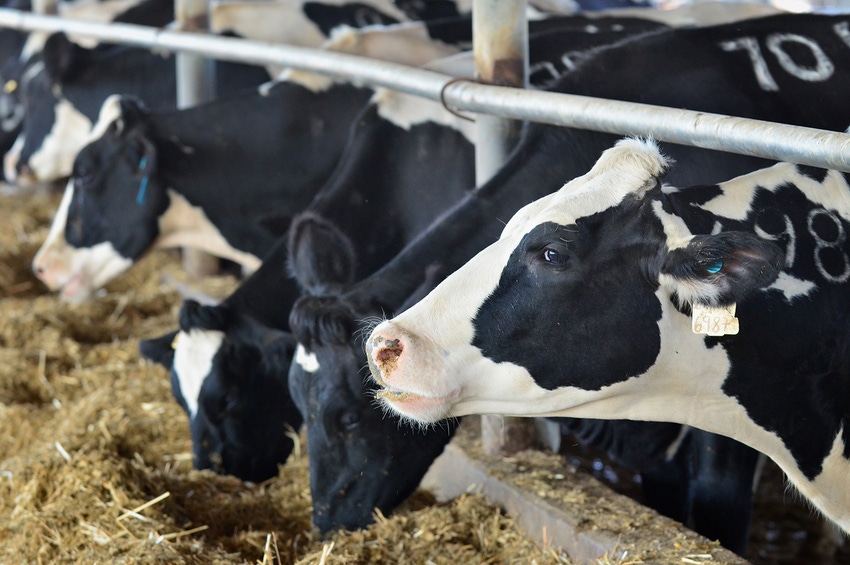FFAR awarded $1m to Michigan State University project, and Council on Dairy Cattle Breeding is providing matching funds.
May 22, 2019

Feed costs account for more than half of total farm costs on U.S. dairy operations, according to an announcement from the Foundation for Food & Agriculture Research (FFAR), and improving the feed efficiency of dairy cows could improve farm profitability and sustainability.
FFAR announced May 21 that it has awarded Michigan State University a $1 million grant to help improve dairy cow feed efficiency predictions. The Council on Dairy Cattle Breeding (CDCB) is providing matching funds, for a total award of $2 million.
Michigan State's collaborating institutions include the University of Wisconsin, Iowa State University, the University of Florida and the U.S. Department of Agriculture's Animal Genomics Improvement Laboratory, the FFAR announcement said.
Dairy farmers could significantly reduce their expenses by selecting cows with the highest feed efficiency, which are the cows that produce the same or more amount of milk while consuming less feed, FFAR explained. In 2010, Michigan State researchers participated in a study sponsored by USDA's National Institute of Food & Agriculture (NIFA) that found that breeding for more feed-efficient cows could save the U.S. dairy sector $540 million a year with no loss in milk production.
A major challenge to achieving this goal has been collecting enough data on enough cows to develop reliable genomic breeding values for feed intake. This project will measure feed intake, milk production, bodyweight and other information on 3,600 dairy cows to add to the existing database created as part of the earlier NIFA project, FFAR said.
In addition, the research team, led by Dr. Michael VandeHaar, will use new sensor technologies to monitor dairy cows’ body temperature, feeding behavior and locomotion, along with milk spectral data, to predict feed intake and gather data from thousands of cows to further improve the ability of farmers to select the most efficient cows.
The researchers also will evaluate whether their genetic predictions can be used to decrease methane emissions from dairy cattle, FFAR added.
“I am excited about this project. We have a great group of geneticists and nutritionists working together to collect intake and sensor data on 3,600 cows from five locations,” VandeHaar said. “Our project will enhance the reliability of feed intake breeding values and enable inclusion of feed costs as a trait in Net Merit. We also expect that our predicted feed intake index can be used for making culling and breeding decisions.”
CDCB plans to provide genomic evaluations for residual feed intake in 2020 so that dairy producers worldwide can include better predictors of feed efficiency in their genetic selection and management decisions.
Additionally, this project will help improve the sustainability of milk production, FFAR said, noting that, according to the Innovation Center for U.S. Dairy, feed production is responsible for about 20% of the greenhouse gas emissions for every gallon of milk produced. Reducing the amount of feed dairy cows consume will reduce this footprint and could also reduce emissions associated with manure and digestion.
“Breeding cows for enhanced feed efficiency reduces rising feed costs on dairy farms, which could increase dairy farmers profitability and improve the competitiveness of the U.S. dairy industry,” FFAR executive director Sally Rockey said. “Improving dairy cows' feed intake will reduce greenhouse gas emissions while producing more feed-efficient cows, more profitable herds and a more sustainable dairy sector that is prepared to meet global food demands.”
Source: Foundation for Food & Agricultural Research, which is solely responsible for the information provided and is wholly owned by the source. Informa Business Media and all its subsidiaries are not responsible for any of the content contained in this information asset.
You May Also Like



